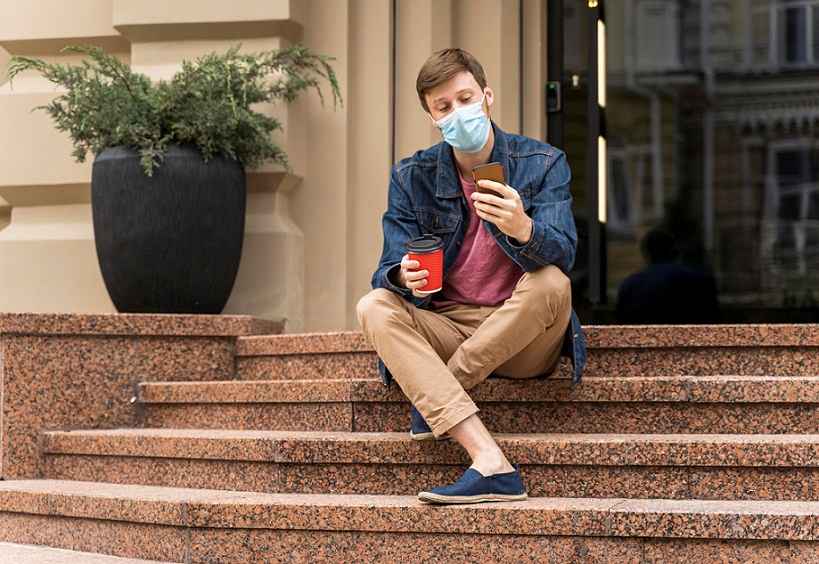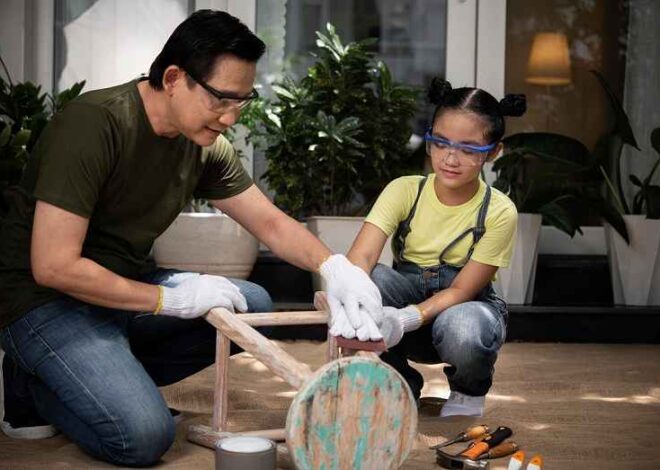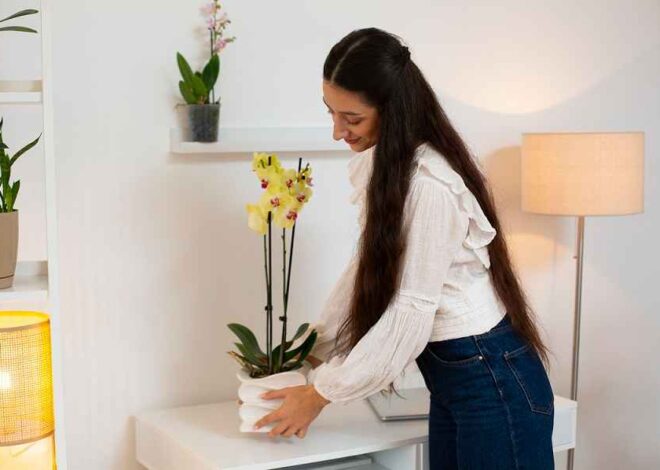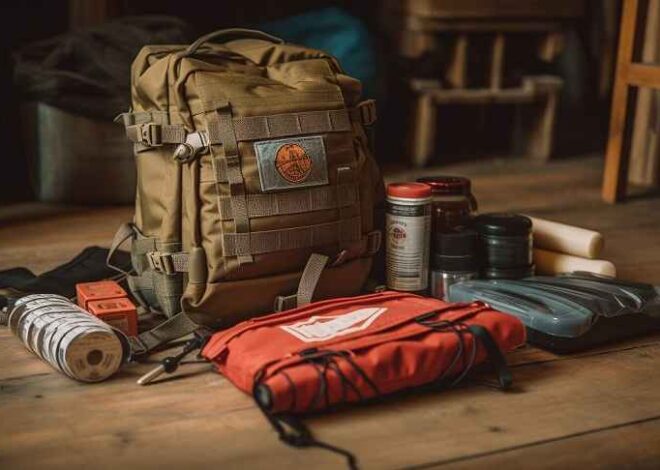
From Rugs to Staircases: Key Areas to Focus on for Fall Prevention
As the leaves begin to turn and a crisp chill settles in the air, we’re reminded not only of the beauty of autumn but also of the importance of safety as our homes become cozier for the season. Fall prevention is a pressing concern, particularly for seniors or those with mobility challenges. But fear not! You don’t need an entire renovation to create a safer living space; often, it’s about focusing on key areas that can make all the difference. From securing loose rugs to ensuring staircases are well-lit and unobstructed, this guide will walk you through essential modifications that enhance safety without sacrificing style. Join us on this journey towards creating a fall-proof haven just in time for sweater weather!
Introduction to the Importance of Fall Prevention
Falls can happen in the blink of an eye. One moment, you’re walking across your living room, and the next you could be on the floor. Slip and fall accidents are more common than many realize, particularly in our own homes where we feel most comfortable. Yet that comfort can often lead us to overlook potential hazards lurking just beneath our feet or around corners.
As the leaves change colors and temperatures drop this fall season, it’s a perfect time to reassess safety in your home. Whether you’re caring for young children or looking out for aging family members, understanding how to prevent these types of accidents is crucial. With proper awareness and a few simple changes, you can create a safer environment for everyone who walks through your door. Let’s delve into some key areas that need attention when it comes to slip and fall prevention at home!
Statistics on Slip and Fall Accidents at Home
Slip and fall accidents are alarmingly common in households. In fact, statistics reveal that falls are the leading cause of injury for older adults. Each year, millions experience serious injuries due to slips at home.
The numbers paint a stark picture: approximately 30% of adults aged 65 and older fall each year. For many, these incidents lead to debilitating consequences like fractures or head injuries.
Even more concerning is the financial impact. The total annual medical costs for treating slip and fall injuries reach billions of dollars, straining both personal finances and healthcare systems.
Understanding where these accidents most often occur can help us prioritize safety measures within our homes. Awareness is key in preventing such incidents from turning into life-altering events.
Identifying High-Risk Areas in the Home
When it comes to slip and fall prevention, identifying high-risk areas in your home is crucial. Start with rugs and carpets. Loose edges or uneven surfaces can easily catch someone off guard.
Next, consider staircases and steps. A single misstep can lead to serious injuries. Ensure that all stairs are well-maintained and free from clutter.
Bathrooms often pose a danger as well. Wet floors create slippery conditions, making falls more likely when getting in or out of the shower.
Don’t overlook outdoor spaces either. Uneven walkways or unlit entry points can increase the risk of accidents outside your home.
By recognizing these critical areas, you empower yourself to take necessary precautions against slips and falls throughout your living space.
-
Rugs and Carpets
Rugs and carpets can add charm to any room, but they also pose a significant risk for slips and falls. Loose edges or wrinkles become hidden hazards that can catch anyone off guard.
Regular maintenance is crucial in preventing accidents. Frequent vacuuming helps keep them flat and free from debris. If you notice any curling or lifting, take immediate action to secure them.
Consider using double-sided tape or non-slip rug pads underneath your rugs. These simple additions create stability without compromising style.
Choosing the right materials plays a role too. Opt for low-pile carpets which are less likely to bunch up compared to thicker ones.
Lastly, be mindful of placement; avoid high-traffic areas where movement may lead to tripping over loose ends or corners. Keeping your floors safe ensures peace of mind for everyone at home.
-
Staircases and Steps
Staircases and steps are often overlooked when it comes to slip and fall prevention, yet they can be hazardous. A single misstep can lead to serious injuries.
Ensure that stairways are well-lit at all times. Adequate lighting highlights each step and minimizes the risk of accidents during nighttime hours.
Consider adding non-slip treads on wooden or tiled stairs. These provide extra grip, especially in homes where moisture is prevalent due to weather conditions.
Handrails should be installed on both sides of the staircase if space permits. They offer support for anyone ascending or descending, greatly reducing the chance of a tumble.
Regular maintenance is essential too; check for loose railings or uneven steps that could pose dangers over time. Addressing these issues promptly helps maintain safety throughout your home.
-
Bathrooms and Showers
Bathrooms and showers are prime spots for slips and falls. Wet surfaces combined with the hard, unforgiving floor can create dangerous conditions.
To enhance safety, consider using non-slip mats or adhesive strips in the shower. These simple additions significantly reduce the risk of accidents.
Ensure that all bathroom rugs have a non-slip backing to keep them securely in place. Loose rugs can easily become tripping hazards when you step out of the tub or shower.
Installing grab bars near toilets and inside showers offers additional support. They provide stability for anyone who may struggle with balance while navigating these slippery spaces.
Lighting matters too; brightening up your bathroom can make a world of difference. Consider motion-sensor lights that activate as you enter, ensuring visibility even during nighttime visits.
Regularly check for leaks or spills on floors to maintain a dry environment free from hazards.
-
Outdoor Spaces
Outdoor spaces can be a hidden hazard when it comes to slip and fall prevention. Wet leaves, uneven surfaces, and garden hoses are just a few culprits that can create dangerous situations.
Regularly inspecting these areas is crucial. Keep pathways clear of debris and ensure they are well-maintained. Paved walkways should be free from cracks or holes that could lead to trips.
Consider using non-slip materials for outdoor stairs and patios. These provide better traction during rain or snow, reducing the risk of slips significantly.
Good lighting also plays an essential role in safety outdoors. Installing motion-sensor lights along paths will help illuminate hazards at night.
Lastly, consider adding handrails where necessary. They offer support while navigating steps or sloped areas outside your home.
Tips for Preventing Falls in Each Area
To enhance slip and fall prevention, start with proper maintenance in high-risk areas. Regularly check rugs and carpets for fraying edges or curling corners. A quick fix can significantly reduce tripping hazards.
In staircases, ensure that steps are well-lit and clear of clutter. Consider adding non-slip treads to each step for extra grip, particularly in homes with seniors or young children.
Bathrooms demand close attention too. Use non-slip mats outside the shower and consider installing grab bars near the toilet and in the tub for added support.
For outdoor spaces, keep walkways free from debris like leaves or snow. Using textured materials on patios can help prevent slips when wet.
Each adjustment plays a vital role in creating a safer environment at home, ultimately fostering peace of mind.
-
Proper Maintenance and Cleaning
Regular maintenance and cleaning play a crucial role in slip and fall prevention. A clutter-free environment reduces the risk of tripping hazards. Make it a habit to pick up items lying on floors, especially in pathways.
Rugs and carpets should be secured to avoid slipping. Use double-sided tape or rug pads for added stability. Ensure they lay flat without any bumps or curled edges.
Keep surfaces clean from spills promptly. Whether it’s water in the kitchen or shampoo residue in the bathroom, quick action can prevent slips. Regularly check for worn-out flooring that might need repairs.
Don’t forget about outdoor areas either. Leaves, ice, or snow can create slippery conditions around entryways and walkways. Keeping these spaces tidy is essential for safety throughout all seasons.
-
Using Non-Slip Materials
Choosing non-slip materials is a smart strategy for preventing falls in your home. These surfaces provide added grip, reducing the risk of slips and skids.
Start with flooring options like textured tiles or vinyl that are specifically designed to enhance traction. In areas prone to moisture, such as kitchens and bathrooms, these materials can significantly lower accident rates.
Rugs also play a crucial role. Opt for rugs made from non-slip fibers or add an anti-slip backing to existing ones. This simple change helps keep them firmly in place.
For outdoor spaces, consider using pavers or composite decking with slip-resistant properties. Not only do they look great, but they also protect against slippery conditions during rain or snow.
Investing in non-slip materials enhances safety without compromising style. Your home can be both beautiful and secure when thoughtful choices are made regarding surfaces underfoot.
-
Installing Handrails and Grab Bars
Handrails and grab bars are essential for enhancing safety in high-risk areas of your home. Their primary role is to provide support, especially when navigating stairs or transitioning in and out of the shower.
When installing handrails, ensure they are securely anchored to the wall. They should be at a comfortable height for users, typically around 34 to 38 inches above the floor. This allows for easy access without straining.
Grab bars also play a critical role in fall prevention. Placing them strategically near toilets and inside showers can significantly reduce slip hazards. Choose models that offer textured surfaces for added grip.
It’s important to select materials that can withstand weight over time. Stainless steel or durable plastic options work well because they resist corrosion and wear.
Regularly check these supports for any signs of loosening or damage. A small maintenance effort can make all the difference in keeping everyone safe at home.
Additional Measures to Consider
When it comes to slip and fall prevention, enhancing lighting can make a significant difference. Brighten up dimly lit hallways and staircases with energy-efficient bulbs. Consider installing motion-sensor lights in key areas for added convenience.
Visibility is crucial too. Use contrasting colors for steps or edges to help clearly define boundaries, especially for those with vision impairments.
Mobility aids like walking sticks or grabbers can also assist individuals who may need extra support when moving around the house. These tools offer stability and confidence on slippery surfaces.
Home modifications should not be overlooked either. Simple adjustments such as removing clutter, leveling uneven floors, or using furniture strategically can create safer pathways throughout your living space. Each small change adds up to a more secure environment that prioritizes safety over comfort alone.
-
Lighting and Visibility
Proper lighting is essential for preventing slips and falls in your home. Dimly lit areas create shadows that can obscure obstacles, making it difficult to navigate spaces safely.
Consider installing bright LED lights in hallways, staircases, and entryways. These not only illuminate paths but also enhance visibility during nighttime hours.
Motion-sensor lights are a great addition, as they automatically turn on when someone approaches. This feature ensures you won’t stumble around looking for a switch in the dark.
Don’t overlook outdoor areas either. Pathway lights can guide you along walkways and driveways while minimizing risks associated with poor visibility.
Regularly check light bulbs to ensure they are functioning properly. Even small upgrades in lighting can significantly reduce the chances of accidents due to unseen hazards lurking in poorly lit corners of your home.
-
Mobility Aids
Mobility aids play a crucial role in enhancing safety at home. Devices like walkers, canes, and crutches provide essential support for individuals who may struggle with balance. They offer stability when navigating through various areas of the house.
Choosing the right mobility aid is key to effective slip and fall prevention. Tailoring these devices to an individual’s specific needs ensures better functionality and confidence while moving around.
It’s also important to keep these aids in good condition. Regularly checking for wear and tear helps maintain their effectiveness. A well-maintained cane or walker offers reliable assistance every time it’s used.
Encourage family members or caregivers to be aware of how mobility aids work. Proper usage can significantly reduce risks associated with falls, making daily activities safer and more manageable for everyone involved.
-
Home Modifications for Aging in Place
Home modifications can significantly enhance safety for seniors wishing to age in place. Simple changes create a more accessible environment that reduces fall risks.
Consider widening doorways to accommodate wheelchairs or walkers. This change promotes smooth movement throughout the home, allowing for greater independence.
Installing grab bars in key areas such as bathrooms and hallways offers extra support when navigating slippery surfaces or uneven floors. These sturdy fixtures provide reassurance during daily routines.
Lowering light switches and raising electrical outlets make them easier to reach, minimizing strain and risk of falls. Additionally, brightening spaces with adequate lighting improves visibility, especially at night.
Lever-style door handles are another great upgrade. They require less dexterity than traditional knobs, making entry effortless for those with limited hand strength.
Emphasizing these thoughtful modifications ensures safety while maintaining comfort and familiarity in one’s own space.
Importance of Regular Check-Ups and Assessments
Regular check-ups and assessments play a crucial role in slip and fall prevention. They allow homeowners to identify potential hazards before they cause harm.
During these evaluations, it’s essential to examine flooring conditions, lighting levels, and the overall layout of your space. Sometimes, simple changes can significantly reduce risk.
Many people overlook routine inspections until an accident occurs. This reactive approach can lead to serious injuries or complications that could have been avoided with proactive measures.
Involving professionals for safety assessments ensures that no detail goes unnoticed. Experts can provide insights on adjustments tailored to individual needs, especially for aging adults or those with mobility challenges.
Additionally, regular maintenance checks help keep handrails secure and flooring intact. By staying vigilant about potential risks at home, you create a safer living environment for everyone.
Conclusion: Taking Action to Keep Your Home Safe from Falls
Taking proactive steps to ensure your home is a safe environment can significantly reduce the risk of slip and fall accidents. Start by assessing each area we’ve discussed, identifying potential hazards in rugs, staircases, bathrooms, and outdoor spaces.
Implementing non-slip materials and installing grab bars where necessary are practical solutions that make a big difference. Regular maintenance keeps these areas tidy and safe for everyone.
It’s also essential to consider lighting; well-lit spaces can prevent many accidents before they happen. For those who may need extra support, mobility aids can enhance confidence when moving around the home.
Regular check-ups and assessments will help you stay ahead of any changes that might increase fall risks over time. Taking these actions not only protects yourself but also creates a safer atmosphere for family members and guests alike. A few thoughtful adjustments today can lead to a more secure tomorrow at home.


